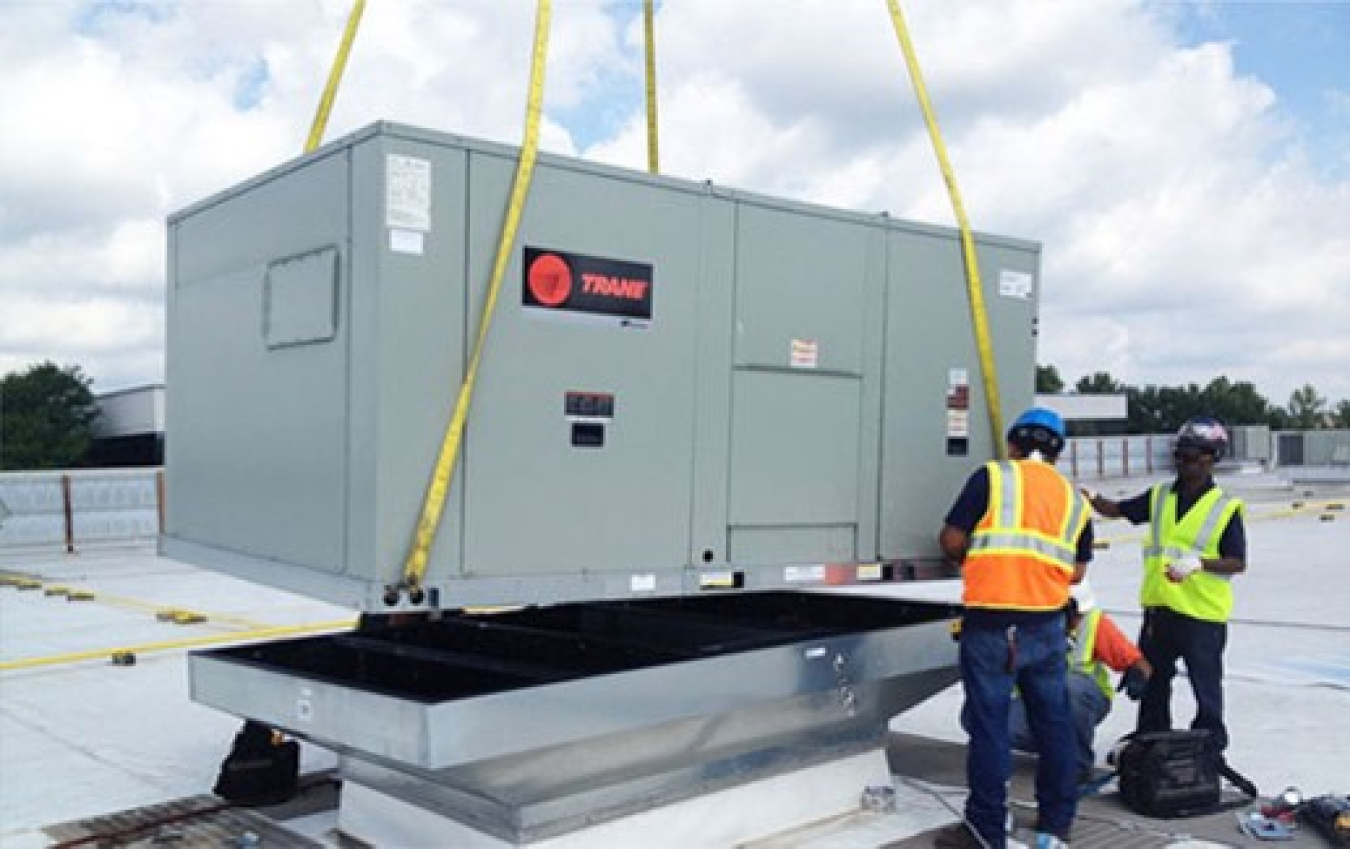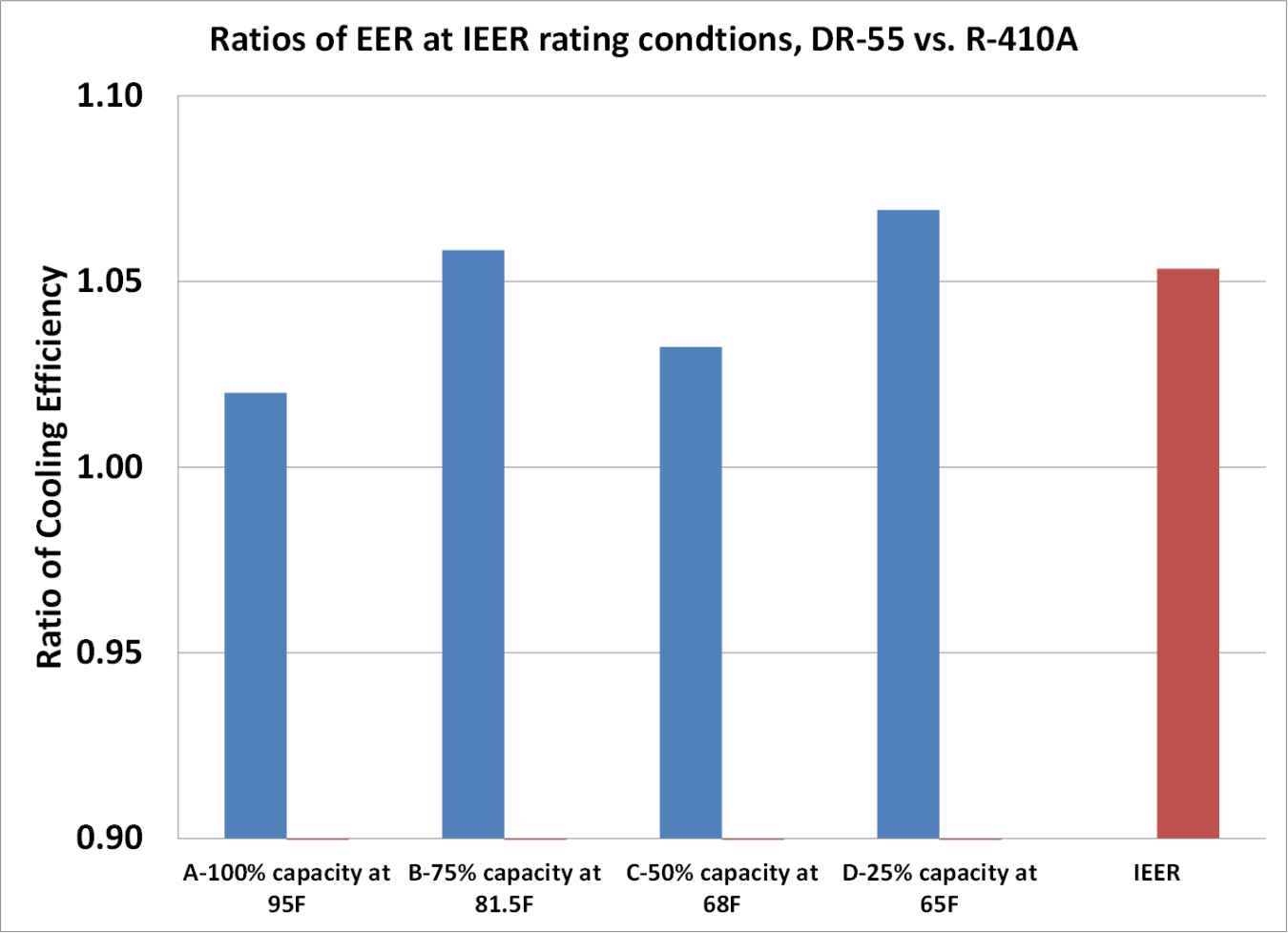
A version of this article originally appeared in the Oak Ridge National Laboratory Building Technologies Update Newsletter April 2016 Issue (URL: www.ornl.gov/buildings → Media → News).
Trane Commercial Systems and Oak Ridge National Laboratory (ORNL) have attained 25% greater performance out of a baseline commercial rooftop air-conditioning unit (RTU) by improving the mechanical system design and switching to a lower-global warming potential (GWP) refrigerant. This project is part of DOE’s larger effort to support the transition to lower-GWP refrigerants while simultaneously improving system efficiency.
The project initially focused on cost-effective RTU efficiency increases using R-410A, the baseline refrigerant in essentially all of today’s RTUs. Through a Cooperative Research and Development Agreement (CRADA), ORNL and Trane conducted an exhaustive search for more efficient components and system concepts for improving the mechanical design, according to ORNL’s Bo Shen.
The researchers modified the mechanical system of the original Trane RTU, and the lab prototype achieved a 20% efficiency gain, still using R-410A. With the same lab prototype, the team later achieved an additional 5% efficiency gain by replacing R-410A with the emerging lower-GWP refrigerant DR-55. Compared with R-410A, DR-55 provides a 5% boost in RTU efficiency and a reduction in GWP from 2088 to 698, or 67%. Predicted annual energy savings for cooling of small office buildings at 16 U.S. locations ranged from 44 to 48% compared with a baseline 11.0 IEER system.
Details on the collaboration’s development of the RTUs are available in publications from the American Society of Heating, Refrigerating and Air-Conditioning Engineers (ASHRAE), Japanese Air Conditioning and Refrigeration News, International Refrigeration and Air Conditioning Conference at Purdue, and ORNL reports. It should be noted that DR-55 has not yet received an ASHRAE number or safety classification (modest flammability or A2L is expected), so the moniker is a temporary name identifying a specific HFC/HFO blend.
The DOE Building Technologies Office sponsored ORNL’s effort within the CRADA, and Trane was self-funded.

